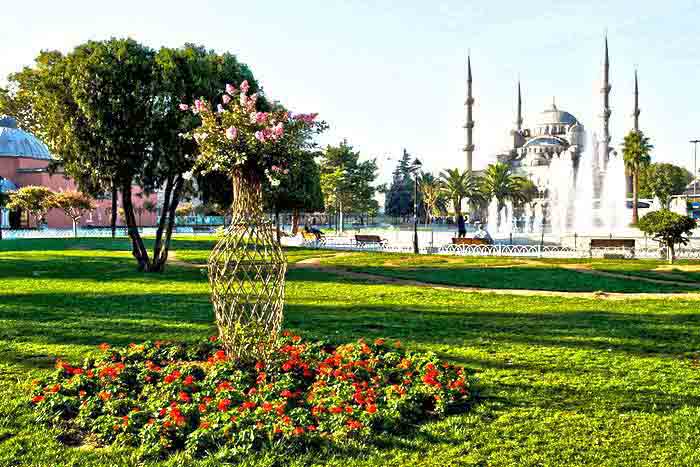This empire’s sway at the outermost boundaries of territory changed little in the eastern provinces. Though there had been military alarms and excursions in the Balkan provinces during the fifth century, at this moment the Danube frontier was no more and no less unsettled than at many other times since it had begun to be taken seriously as a boundary 500 years earlier. East of Constantinople, its boundaries with Persia were, if occasionally tested, mainly stable. South of Syria and around through Egypt and Cyrene, the long past of Roman dominion, which in turn continued Alexander’s heritage, now represented some 800 years of continual inclusion in the Mediterranean world.
The world of people who spoke Latin had seen some changes, but those changes must not be overstated. The traditional cities dominated the traditional landscapes. The economic bases of these societies had not visibly changed—the same crops were being grown in the same places; the same markets were doing the same business. Cross-Mediterranean traffic from Carthage to Rome had fallen off—a fundamental fact of the age, but invisible to many. The Africans actually saw this as good news, for it meant that more wealth stayed home, untouched by taxation. Populations shrank and the world was not so prosperous as it once had been, but it was recognizably the same.
In governmental terms, a conservative observer would say that the provincial lines had been redrawn a bit, and new chief local rulers were in place in Africa, Spain, Italy-Provence, and northern Gaul. Since Diocletian around 300, the empire had been officiously divided into a series of larger and smaller units of organization, where the more than 100 provinces were aggregated into dioceses of a dozen or so provinces, and those in turn into four or more prefectures whose alignment would shift with political and military needs. The arrangement under the rulers of the late fifth century and the early sixth century looked more like a rearrangement than a revolution. More authority had devolved on leaders such as Theod- eric and Clovis, but they in turn had recentralized at least some control from the multitude of smaller bureaucratic units of two centuries before. The chief variations from the imperial past were Italy’s power in southern Gaul and Rome’s abandonment of Britain.
In all respects, however, the provinces of the Roman empire from Gaul to Arabia, from Mauritania to Armenia, were in a better and more peaceful order than they had been for almost 100 years. What had changed was the scope, or scale, of Roman pretension and control. Theoderic, we have seen, praised the idea of empire but kept a firm grip on his own part of it. Had he been expressly offered an imperial crown by the soldiers, the senate, or Constantinople, he surely would have taken it, and he probably expected that either for himself or for his heirs customized tour bulgaria.
Reasonable observers in Constantinople
In practical terms, if you sat in the palace in Constantinople in the fifth century, you had less western tax revenue at your disposal than before, but you also had less responsibility for defending wide swaths of territory that had long been a plague to maintain. Reasonable observers in Constantinople would probably have had interesting discussions and disagreements as to whether the trade-off was positive.
It is true that something had been lost. The advantages of scale were real. The coherence of a culture and the freedom of movement and interaction of peoples were powerful by-products of the Roman Mediterranean hegemony. The world paid a real price for the violence that brought subjugation and discipline to peoples to secure that hegemony, but the victims of this imperialism had died 500 years ago and their suffering could reasonably if cold-bloodedly be written off against the benefits of empire. Whether the new world order of 526 could have, with different strategic choices, coalesced again into a more coherent Mediterranean community of nations is a question that cannot be answered.
Market day in Calabria
Can we grasp a little of what life in the Italy Theoderic created was like away from cities and palaces? Here is a story from a letter that Cassiodorus wrote in the name of Theoderic’s grandson.
At a place called Consolinum, on the inland road from Naples south to Reggio di Calabria, the locals took over a spring that had been the site of an ancient religious festival—the Leucothea—to use as the site for a Christian baptistery.35 Or at least that was the official version of what happened. We cannot know for sure whether the residents set great store by such a transformation or whether they continued to think of and frequent the site much as their ancestors had done for centuries. But the natural springs on the site gave abundant pure water, fish boldly frolicking in them unaware that hungry fishermen would soon capture them. Leucothea, the white goddess and aunt of Dionysus, was a patron of initiations into religious cults long before anyone heard of Christianity Church of San Vitale in Ravenna.








